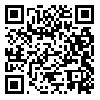2- Associate Professor, Governmental Management - Urban and Entrepreneurship Department, School of Management & Accounting, Allameh Tabataba’i University, Tehran, Iran
Background and Aim: Diagnosis is an implement of organizational development. The main objective of this study was to diagnosis the TUMS by using Six Box Model of the Weisbord to identify in which areas of this model Purposes, Structure, Leadership, Rewards, Relationships, Helpful Mechanisms and Attitude toward Change is more vulnerable.
Materials and Methods: The research was descriptive and the statistical population included five hospital staff subset of TUMS. Out of 280 questionnaires we received 220 completed ones. For data gathering we used standard questionnaire of the Weisbord which was estimated as both reliable and valid. By the use of Cronbach alpha coefficient, reliability coefficients was obtained equal to 0.85. Also, questionnaire was confirmed by 5 faculty members in terms of nominal and content validity. The data were analyzed by SPSS software.
Results: All the variables except rewarding and Attitude toward Change had significant changes p<0/05 thus the H0 for Purposes, Structure, Leadership, Relationships and Helpful Mechanisms were rejected. These variables stay in acceptable condition. However there was a significant difference between Relationships and rewarding; considering their T-Value it could be concluded that Relationships situation was desirable (T=3/62) but rewarding situation was undesirable (T=5/70).
Conclusion: The findings conclude that TUMS, currently the most appropriate situation was in communication and the most inappropriate situation was rewarding. Also other aspects are between these two conditions. Also, rewarding area needs planning to increase employee satisfaction.
| Rights and permissions | |
 |
This work is licensed under a Creative Commons Attribution-NonCommercial 4.0 International License. |


